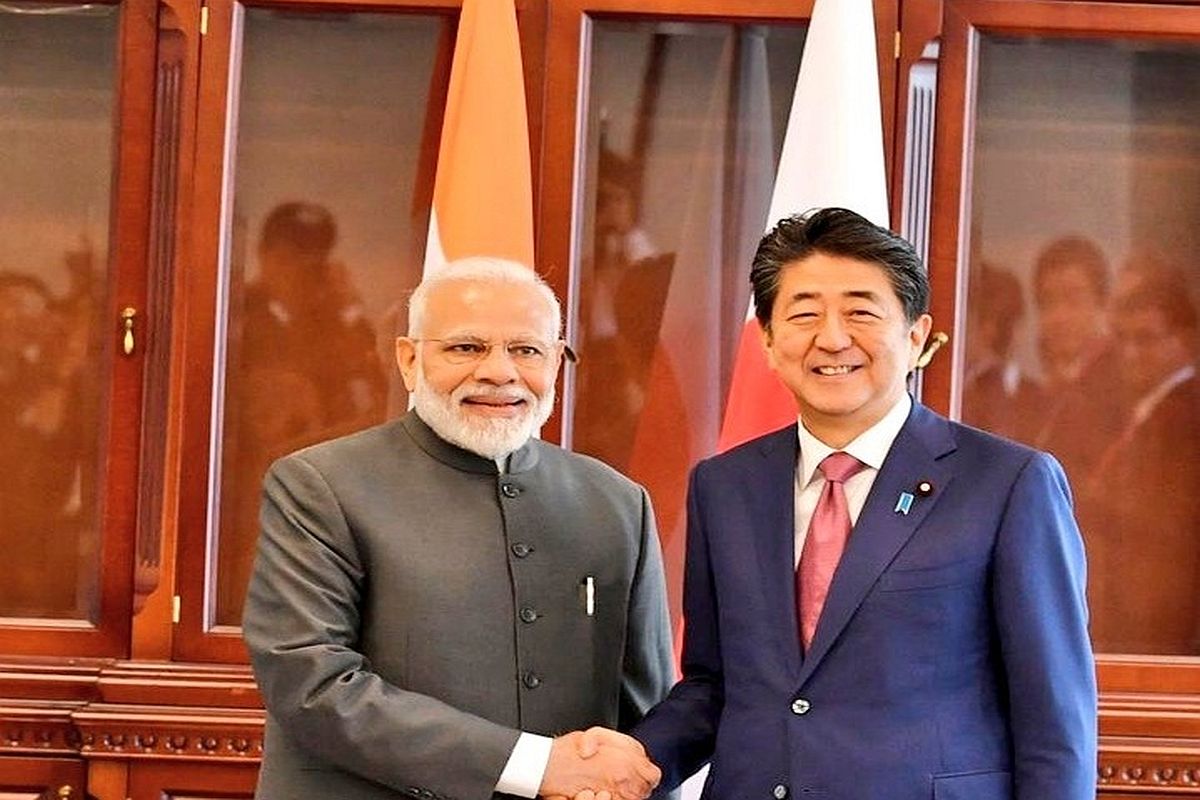It is unfortunate that the scheduled summit between Prime Minister Narendra Modi and his Japanese counterpart, Shinzo Abe, has been called off with the latter declining to visit India at this juncture on account of disturbed conditions. Yet the fact that the meeting had been organised points to the strategic and political convergence between the two countries. Tensions in the India- Pacific region and China’s assertive behaviour have lent a strategic dimension to the cooperation between the two countries.
The fact that Guwahati was the scheduled venue would suggest that there is a certain link between India’s Look-East policy and the North-east region. Long before India-Japan relations were elevated to the strategic level, the film Love in Tokyo, produced in 1966, had captured the romantic flavour of Japan and had touched a sentimental chord amongst India’s film-lovers. That has now graduated to a love story, sustained and nurtured by the convergence of political, economic, strategic and security interests of the two countries. It is a time-tested relationship based on the strong foundation of mutual trust, sensitivity, care and concern.
Advertisement
There is no contentious issue, no major irritants, rather a bounty of shared interests, shared values and reciprocal goodwill. In spite of a regime-change in both countries, the equation between India and China over the years has been growing in strength. How much importance Prime Minister Modi attaches to Japan can be discerned from the fact that his first port of call was Japan in September 2014 ahead of his visit to the United States. The Modi-Abe summit was intended to give an impetus to such annual meetings.
Apart from Russia, Japan is the only other country with which India has the institutional mechanism of annual summits. Abe is no stranger to India. His grandfather, Nobusuke Kishi, had as Prime Minister visited India in 1957. As a child, Abe might have heard from his grandfather the story of India leaving an abiding impression, which endures in his memory even today. Abe also has the unique distinction of having addressed the Indian Parliament in 2007 and was also the Chief Guest at the Republic parade in 2014.
Though a distant neighbour, Japan’s benign influence on the Indian economy is palpable. In the automobile sector, and also in the “white goods” category, Japanese brands are the household names. Delhi Metro, thelife line of the capital city that is choked with pollution, is yet another icon of Japans’ goodwill gesture. Imagine what would have been Delhi’s pollution level without the Metro. Now after the success of the Delhi Metro, it is likely that India soon will have its first bullet train between Ahmedabad and Mumbai with the help and support of Japan. India-Japan strategic partnership jells very neatly in the context of the transformation taking place in the domestic economies of the two countries.
At a time when India has emerged as the fastest growing world economy, Japan has all the potential to become India’s most preferred partner in its trajectory of growth and development. Japan is resetting its economy after it plummeted to the third position yielding to China in 2010, which occupied the position of the world’s second largest economy. The calibrated approach to revamp the Japanese economy has been dubbed as “Abenomics” with monetary easing, expansionary fiscal policy and longterm growth.
There are signs of green shoots in the Japanese economy. The recent trend indicates that it grew at an annual pace of 1.0 per cent, instead of shrinking. India’s projected $ 5 trillion infrastructural requirement offers a very good opportunity for Japanese investments in roads, highways, smart cities. Japan has already committed to the flagship projects like the Western Dedicated Freight Corridor, Delhi-Mumbai-Industrial Corridor and the Chennai-Bengaluru Industrial Corridor. Once these projects materialise, they will generate employment and boost the economy of the country.
Apart from the economic aspects of the engagement between the two countries, security and defence cooperation have acquired salience in recent years particularly in the backdrop of China’s rising profile in the maritime domain. There is a regular Defence Ministers’ conference and a dialogue mechanism between the National Security Advisers of the two countries after the creation of the National Security Council in Japan last year. Japan has been participating in the India-US Malabar exercises and there have been joint exercises between the Indian Navy and the Japanese Coast Guard.
The lifting of the export of defence equipment and technology by Japan has opened up avenues of cooperation in joint production and transfer of defence technology. Currently there is a Joint Working Group on cooperation in the US-2 amphibious aircraft. The two countries are also trying hard to clinch an agreement in nuclear cooperation for civilian purposes. Since the issue is highly sensitive in Japan’s domestic politics, the finalization of the deal is taking a longer time. But it is only a question of time. This can be gauged from the fact that Japan has decided to remove six of India’s space and defence related entities from its End User List.
The two countries are working together for India’s membership in four international export control regimes ~ Nuclear Suppliers Group, Missile Technology Control Regime, Wassenaar Arrangement and Australia Group with the aim of strengthening the international non-proliferation efforts. In terms of India’s foreign policy, perhaps it will not be an exaggeration to suggest that ‘East or West, Japan is the best’.
No wonder, therefore, that New Delhi looks towards Japan as India’s ‘indispensable natural partner’. It is the USA which has been described by New Delhi as ‘India’s natural partner’. The prefix ‘indispensable’ puts India’s relationship one notch above the USA. In his Singapore Lecture, Narendra Modi very thoughtfully said, “There are few partnerships that enjoy so much goodwill in India as our relationship with Japan”.
(The writer is a Senior Fellow of the Indian Council of Social Science Research affiliated to the Indian Institute of Public Administration. Views are personal)











